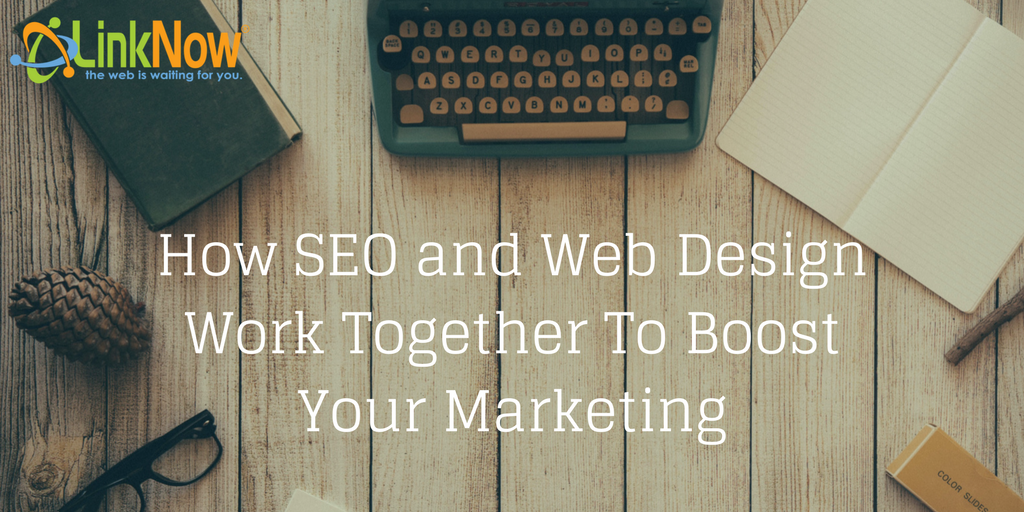
Have you seen what high quality SEO and web design can do for your business? Here's how they work together to take your marketing strategy to the next level.
So you’ve spent tons of time and resources on marketing activities for your small business. You’ve opened social media accounts, started using email marketing campaigns, and even have some paid ad campaigns running. BUT if you don’t have a great website, your marketing efforts could be for naught. “My website looks great,” you might be thinking. If it does, did you design in with SEO in mind?
What every business owner should keep in mind is your marketing efforts are to drive sales and to drive sales, you should be pointing people toward your website. This means every social media account, email campaign, and paid ad should link the reader to your website. If your website is not designed well, those visitors will leave. You must also consider how easy it is to find your website apart from these marketing activities. To maximize your chances of coming up in an organic search, you need to rank high on search engine results by optimizing your SEO strategy.
When SEO and web design come together, the result is a user-friendly, informative, and easy to find website that will maximize your sales. In this article, we'll discuss how SEO and web design come together to maximize your website and marketing efforts.
SEO Explained
SEO encompasses a series of activities to cause your website to rank higher on search engines like Google and Bing. These activities include executing an SEO strategy, choosing focus long-tail keywords for website pages, and constantly generating new content on a blog. Sad to say, but 75% of search engine users won't venture beyond the first page of search results, so ranking on the first page will open you up to many more sales opportunities.
To best serve its customers, Google frequently updates their search algorithm, which can be a headache for marketers and web designers. If you are running your own SEO strategy, you’ll need to monitor the changes Google makes and adjust accordingly.
Web Design Explained
Web design is the process of creating a website. This includes SEO, layout design, graphics design, navigation, metadata, responsiveness to different resolutions, and content production. Web design also involves ensuring the website is programmed correctly and optimizing the speed.
There are a few options when designing a website. You can program it yourself, hire a freelancer, or hire an agency to create everything for you. Each has its pros and cons, so you’ll have to weigh which option is best for your business needs and budget.
How SEO and Web Design Work Together
By definition, web design includes SEO, but they’re frequently run as completely separate processes. Operating your website this way can ultimately double your work as you realize you need to change web design elements to accommodate certain SEO tactics.
Below, I’ve laid out the key areas in which SEO and web design work best when done together.
1) Engagement
Engagement on a web page relies on two things: the design and the content. To increase engagement on a page, you want the design to be pleasing to a reader’s eye. As humans, we make snap judgments based on appearance, and websites are no exception.
After making that snap decision, your content is your next attempt to keep a visitor on your site. Your landing page copy should hook the visitor and make him want to read on. Content can fall under both SEO and web design as content will help your SEO ranking, but your copy content is what will determine if a visitor stays on your page.
2) Website Backlinks
Backlinking (i.e. your website link is featured on other websites and articles) signals to search engines that people view your website as a credible source and even industry thought leader.
For design, you’ll want to ensure each web page, and blog post has a descriptive URL, i.e. it reflects the content on that page. For example, you would rather have yourwebsite.com/our-services than yourwebsite.com/024395.
Backlinking itself is a way to boost your website’s ranking on SEO. Many business owners use a content strategy to increase the number of backlinks to their website. Building up your backlink inventory takes time, especially as consumers become warier of people who are trying to saturate web publications to boost their backlinks quickly. There are several ways for small businesses to build their backlinks including teaming up with local businesses, partnering with niche influencers, and figuring out the kind of content that works for your competitors.
3) Social Media Sharing
There are a few reasons to share your website and content on social channels. The first is for further backlinks to your website, but the jury is still out on whether those actually help increase your rankings. The second reason to be on social media is because social media channels will turn up in search results, sometimes even before your website. These social accounts typically provide high-quality content like videos and images which add to your brand’s overall image.
There’s also the bonus of social media channels being more casual, which adds personality to your business.When designing your website, ensure your blog posts, and any other content you want to be shared has social media share buttons to make it easier for your visitors.
4) Speed
I cannot overemphasize the importance of speed for your website. Simply put, if your website is slow, people will abandon it. Studies have shown humans now have a 9-second attention span which is only 1 second better than a goldfish. If your website is too slow or your web copy doesn’t grab users' attention in 9 seconds, they will leave your page, resulting in a lower SEO ranking.
Speed is equally important for both SEO and web design, but web design is what ultimately controls the site’s speed. Certain design layouts load faster than others, so when working with a web design agency, ensure they’re choosing a speedy layout for your website. Also, make sure they don’t fill your site with too much JavaScript and optimize your images. All of these activities will lead to a speedy website.
5) Navigation
Navigation, like engagement, involves SEO and web design principles. The easier it is to navigate your site and find the information you need, the longer a visitor will stay on your site.
Longer sessions = better SEO rankings.
If users are overwhelmed by choices or cannot find what they’re looking for easily, they will abandon the site, which hurts your SEO ranking. You can design an easily navigable site by using descriptive URLs, giving readers directions to find certain materials, and limiting the number of drop downs and sub-drop downs in your menus.
6) Optimized for multiple resolutions
Today, it’s fairly common for people to have more than one device on which they surf the web. In fact, 48% of website visits come from a mobile device (39% from phone, 9% from tablet). Google recognized this trend among its users and changed their algorithm to ding websites which haven’t been optimized for mobile.
In short, make sure your website looks great on mobile to increase your SEO ranking. But don’t stop at optimizing for mobile. Optimize for multiple smartphone screens and tablets, plus desktop computers. The more adaptive your website is, the easier it is for visitors to interact with it, which boosts your SEO ranking.
Using a blog to increase your SEO ranking.
If you don’t have a blog for your small business, or you have one but haven’t updated it in several months, I highly recommend developing a content strategy for one. Blogging, though time-consuming, has a high return for those who produce quality content about every two weeks.
Here are some benefits:
- -More chances for SEO keyword usage, particularly long-tail keyword phrases
- -Establishes you as trustworthy and a credible source
- -Helps you become a thought leader in your market, even if it’s local
- -Search engines see your website and blog are active and regularly updated, which helps maintain your SEO ranking
- -Provides more content for you to share in other marketing efforts like social media, email campaigns, and paid ads
While a blog doesn’t have much to do with design, it’s an element you should consider incorporating into your website due to its SEO benefits. Despite the fact that combining SEO and web design seems like a lot of work, it truly isn’t. By incorporating the two, you reduce the amount of time spent on designing and optimizing the website overall. SEO and web design also naturally go together in so many ways. It’s easy to see how the small changes you can make in web design benefit SEO rankings, so why wouldn’t you do the two together?
If you have any questions about how SEO and web design work together, I’d love to hear your comments in the box below!


I completely agree that you should be combining SEO with your web design, as having a professional looking website is just not enough to make your website successful.
You gave some great insights on how to actually combine the two, as many new website creators aren’t aware of the SEO aspect of the design. Thanks for the tips, Eve!